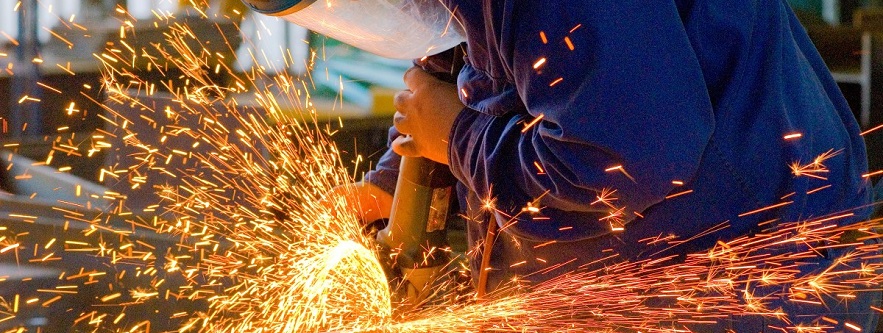Deciding how to manufacture metal parts is an important decision that affects the quality, design, cost, timing and repeatable performance of the metal components. You can choose between metal stamping or metal fabrication techniques, but you need to be aware as both have different advantages and disadvantages. The type of technique you choose, will depend only on the metal part and your needs. To better understand the difference between bent metal fabrication and metal stamping, we have prepared for you a list of its advantages and disadvantages. Consequently, you will easily choose the method that will best align with your design and production requirements.
Metal Stamping vs. Metal Fabrication Basics
Metal Stamping vs. Metal Fabrication Basics
- Metal Stamping – Metal stamping or also known as pressing, incorporates various manufacturing processes like blanking, punching, embossing, flanging, bending and coining through the help of a machine press or stamping press. Metal stamping can be performed as a single phase operation, where every stroke of the press produces a metal part, or as a series of operations.
- Metal Fabrication – Metal fabrication is a method that creates metal parts by using cutting, bending and assembly techniques. Cutting can be done by shearing or sawing parts, or through CNC cutters that use a laser, mill or waterjet cutting.
Advantages And Disadvantages Of Precision Stamping
Advantages Of Metal Stamping
- Generally speaking, metal stamping is a fast and cost-effective solution for manufacturing large quantities of complex products.
- If you want to have complex products with innovative design, sophisticated precision stamping is perfect for the job. Precision stamping includes material flow, drawing as well as very tight tolerances and repeatability techniques that cannot be found in metal fabrication.
- Stamping companies have skills in advanced production techniques as well as prototype design services and simulation software.
- Upfront tooling costs can make metal stamping uneffective for short production runs
- Longer initial lead times are necessary mainly because of the required time to develop tooling
Advantages And Disadvantages Of Metal Fabrication
Metal fabricators Melbourne professionals state that metal fabrication offers a high degree of flexibility and greater speed in adjusting and prototyping product features.
Advantages Of Metal Fabrication
Advantages Of Metal Fabrication
- Metal fabrication has numerous production techniques in order to create value-added metal parts that can be customized to match the customer's specification.
- The great flexibility gives the freedom to quickly implement design changes to a particular part. Stainless steel fabricators Melbourne experts state that design changes in metal fabrication are more cost effective than with other techniques.
- Laser Cutting/Shearing/Waterjet Cutting – These are just some of the many effective techniques used to cut raw sheet materials.
- Forming, machining and assembly are precise high quality techniques used to form and finish the product's design.
- Metal fabrications is more intense and requires a higher cost per piece.
- Longer term and extended programs can be more expensive.
- Trying and improving with new technologies can be a risk and a challenge when compared with the traditional stamping die.
- Complex drawn parts are not eligible for sheet metal fabrication services.
- The production process is slower when compared to the metal stamping.
- Higher material costs.


